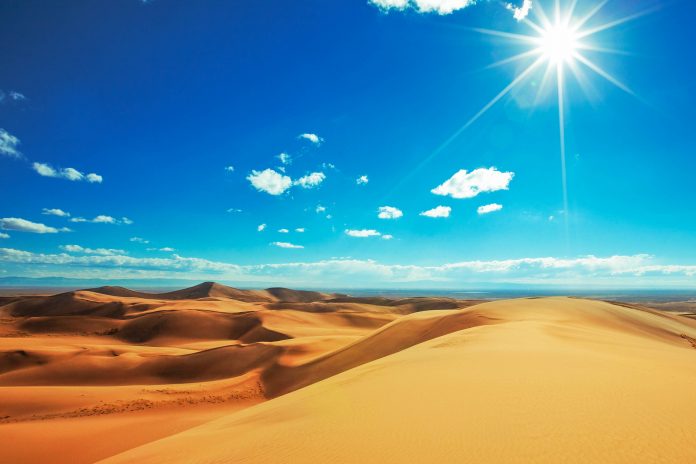Die Sahara ist die größte Wüste der Welt. Absolute Einsamkeit, hunderte Meter hohe Dünen und ein überwältigender Sternenhimmel machen eine Reise in die Sahara zu einem unvergesslichen Erlebnis.
Die Sahara im Norden des afrikanischen Kontinents ist die größte Trockenwüste unseres Planeten. Sie erstreckt sich von der Atlantikküste Afrikas bis zum Roten Meer und ist mit einer Fläche von neun Millionen Quadratkilometer so groß wie die gesamten Vereinigten Staaten von Amerika. An der Sahara liegen Marokko, Westsahara (nur von wenigen Staaten anerkannt und eigentlich zu Marokko gehörig), Mauretanien, Algerien, Mali, Tunesien, Libyen, Niger, Tschad, Sudan und Ägypten.
Inhaltsverzeichnis
BILDER: Sahara
Fotogalerie: Sahara im Norden Afrikas
Unwirtliche Bedingungen in der Sahara
Auch wenn die Sanddünen der Sahara am besten bekannt sind, macht die so genannte Erg nur ein Fünftel der gesamten Wüstenfläche aus. Der Rest der Sahara besteht aus Stein, Kies und Fels.
Extremes Klima

Die Durchschnittstemperaturen in der Sahara liegen bei 38°C im Sommer und 25°C im Winter. Im Sommer treten Extrem-Temperaturen bis zu 60°C am Tag und im Winter bis zu -10°C in der Nacht auf. Auch im Sommer ist es in der Nacht um bis zu 30°C „kälter“ als tagsüber und im Winter sind sogar Schneefall und Bodenfrost möglich. An manchen Stellen der Sahara fällt oft jahrelang oder sogar jahrzehntelang kein einziger Tropfen Regen.
Gigantische Sandstürme
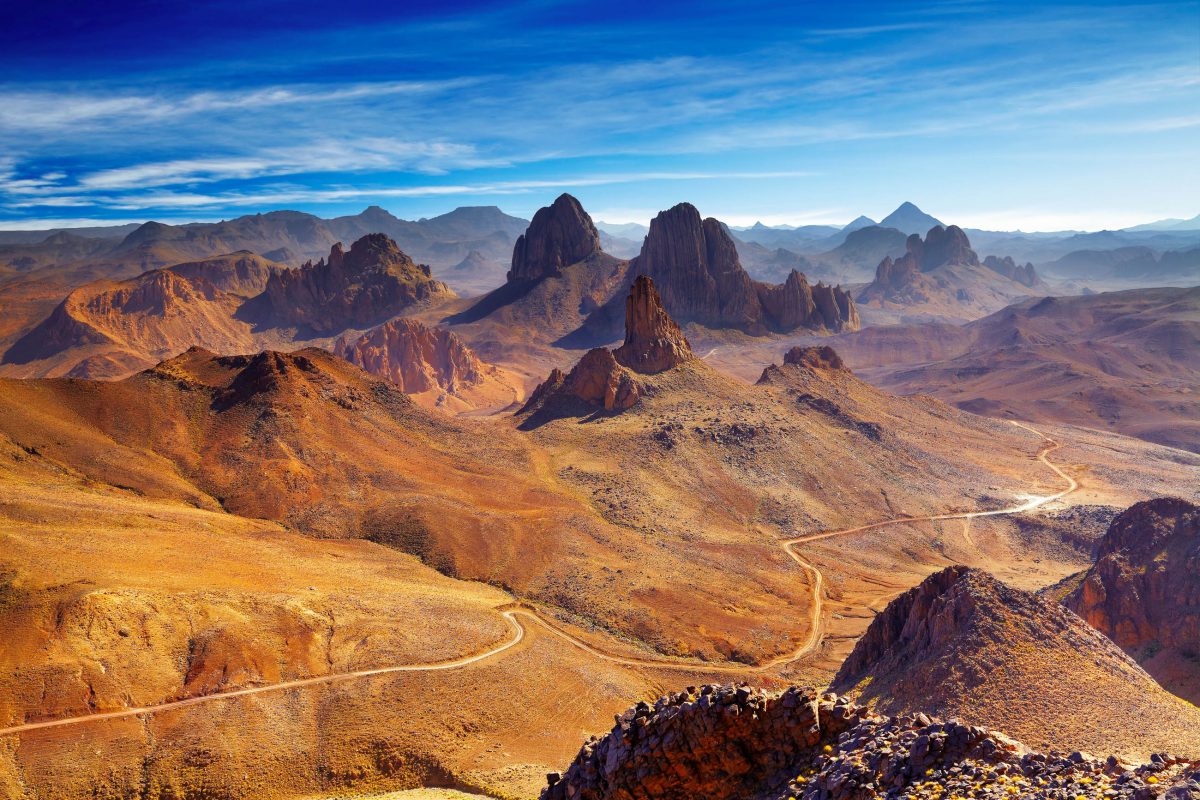
Den widrigen Bedingungen in der Sahara trotzen nur wenige Menschen, hauptsächlich Araber, Mauren und Berber oder die kleinen Gruppen der Tubu und Tuareg. Die Bewohner der Sahara sind zu 40% nicht sesshaft und leben von der Viehhaltung und vom Transsaharahandel. Sie wissen am besten wie man in Karawanen die Große Wüste überquert ohne sich zu verirren und zu verdursten.
Die Sahara lebt trotzdem
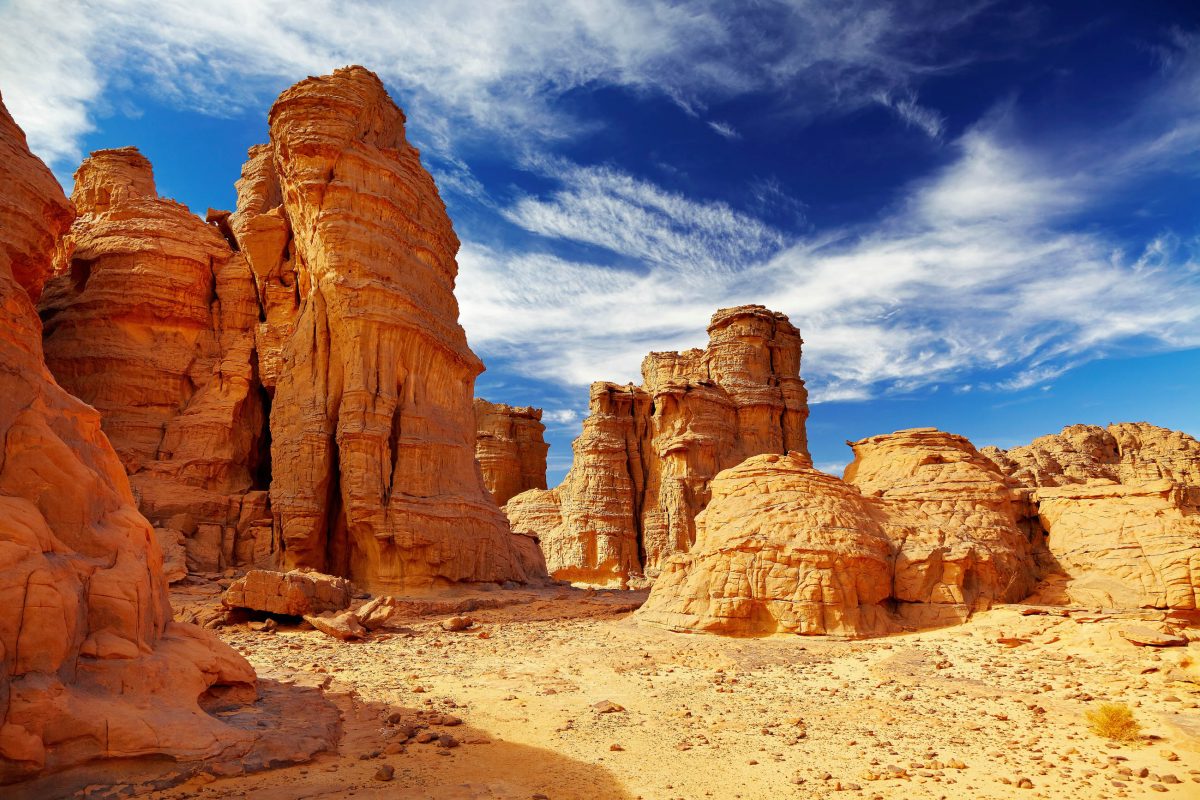
Die extremen Temperaturschwankungen lassen Leben in der Sahara nur in eingeschränkten Formen zu. In der Mittagshitze kann sich ein Lebewesen nicht länger als ein paar Minuten unter der sengenden Sonne aufhalten, bevor seine Körpertemperatur lebensgefährlich ansteigt.
Einige Spezies haben sich jedoch auf außergewöhnliche Art und Weise dem hitzigen Leben in der Sahara angepasst. So haben die Silberameisen durch ihre Silberne Farbe einen natürlichen Sonnenschutz, der das Licht ähnlich eines Raumanzugs reflektiert und ihnen auch bei größter Mittagshitze Ausflüge von bis zu 15min in der prallen Sonne erlauben, bevor sie sich wieder in ihre Sandlöcher zurückziehen müssen.
Ein weiteres faszinierendes Beispiel stellt die Wüstenrose dar, als „rollender Dornbusch“ gut bekannt. Dieser auch als Auferstehungspflanze bezeichnete Strauch kann jahrzehntelang ohne Wasser überdauern. Ist sein Standort trocken genug wird er vom Wind aus dem Sand gerissen und rollt über die Dünen. Landet die Wüstenrose in einer der seltenen Wasserpfützen der Sahara entrollen sich ihre Zweige innerhalb von Minuten und saugen das kostbare Nass auf.
Beginnt es dann auch noch zu regnen, brechen die Samenkapseln der Wüstenrose auf und innerhalb weniger Stunden erscheinen zarte Keimlinge, die sofort Blüten und kurz darauf auch Samen ausbilden. Diese machen sich dann auf ihre meist jahrelange Reise zur nächsten Wasserstelle.
Oasen in der Sahara
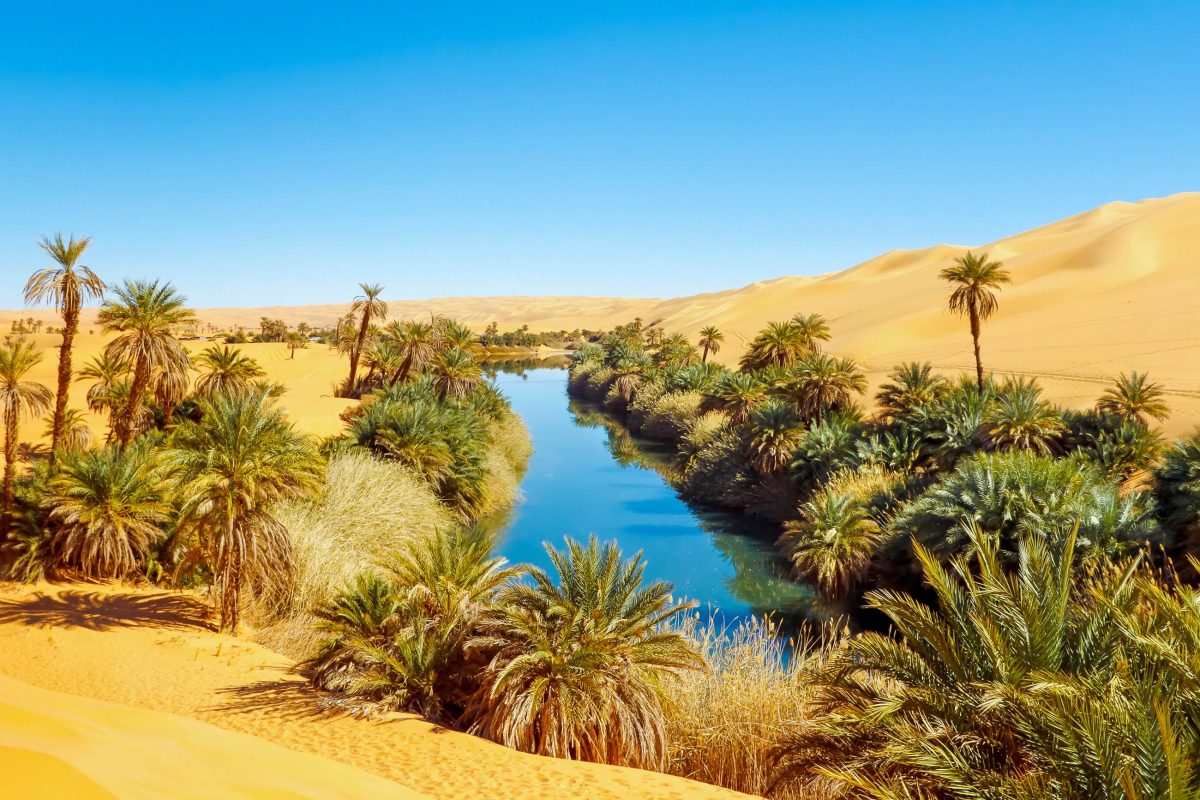
Bessere Lebensbedingungen herrschen natürlich in den Oasen, den wenigen palmengesäumten Wasserstellen der Sahara. In manchen von ihnen – die größte bildet der Nil als einziger Fluss, der die Sahara durchquert – leben sogar Fische und Krokodile.
Einmal im Jahr lässt der westafrikanische Monsun die Sahara erblühen. Im Juli und August fallen im Süden der Sahara bis zu 200mm Niederschlag, die aus der unwirtlichen Wüste eine blühende Savanne machen. Genauso rasch wie die Wüste ergrünt, ist das fantastische Naturschauspiel jedoch auch wieder vorbei und die Samen der Pflanzen fallen in ihren monatelangen Schlaf vor dem nächsten Regen.
Unterwegs in der Sahara

Für jeden Nordafrika-Reisenden ist ein Besuch der fantastischen Wüstenlandschaft in der Sahara ein absolutes Muss. Die beeindruckendste Art, die Sahara zu erforschen, ist mit dem Kamel oder dem eigenen Geländeauto.
In vollkommener Menschenleere über die schimmernden Sanddünen zu brausen und nachts unter einem überwältigenden Sternenhimmel kampieren – nichts bringt einem die Seele der Sahara näher.
Touren durch die Wüste – niemals allein!
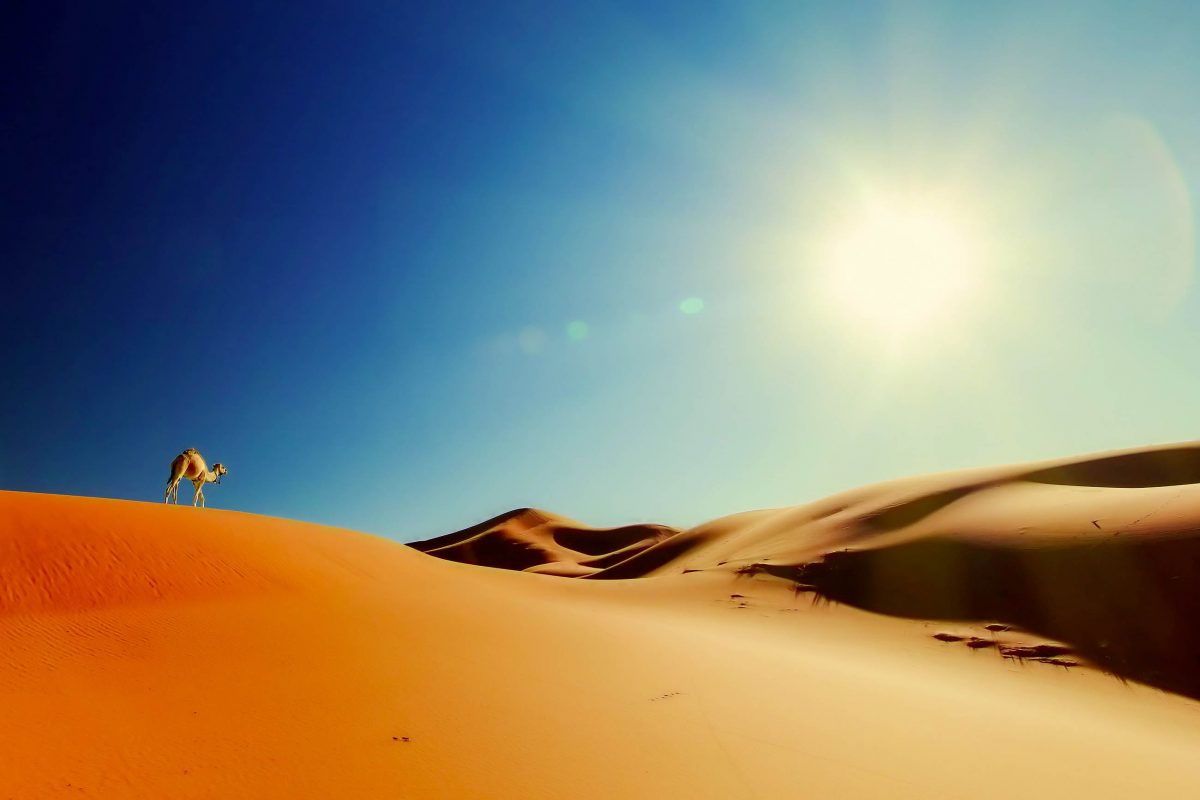
Dies birgt natürlich auch Gefahren in sich. Vor allem unerfahrene Reisende sollten sich nicht allein in die Sahara wagen. Das Fahren auf Sand unterscheidet sich stark von Pisten mit Schotter oder Asphalt und die Orientierung in der endlosen Weite ist auch nicht immer einfach.
Die ersten paar Ausflüge in die Sahara sollten daher unbedingt von einem professionellem Führer begleitet werden. Anbieter für Touren in der Sahara gibt es zuhauf, ob nun in der Gruppe mit Geländewagen, im kleinen Kreis mit eigenem Chauffeur oder Kamel-Trekking in einer Karawane. Kurze Ausflüge in der Sahara werden so gut wie von jedem Hotel im südlichen Marokko, Ägypten oder Tunesien angeboten.
Nachts in der Wüste
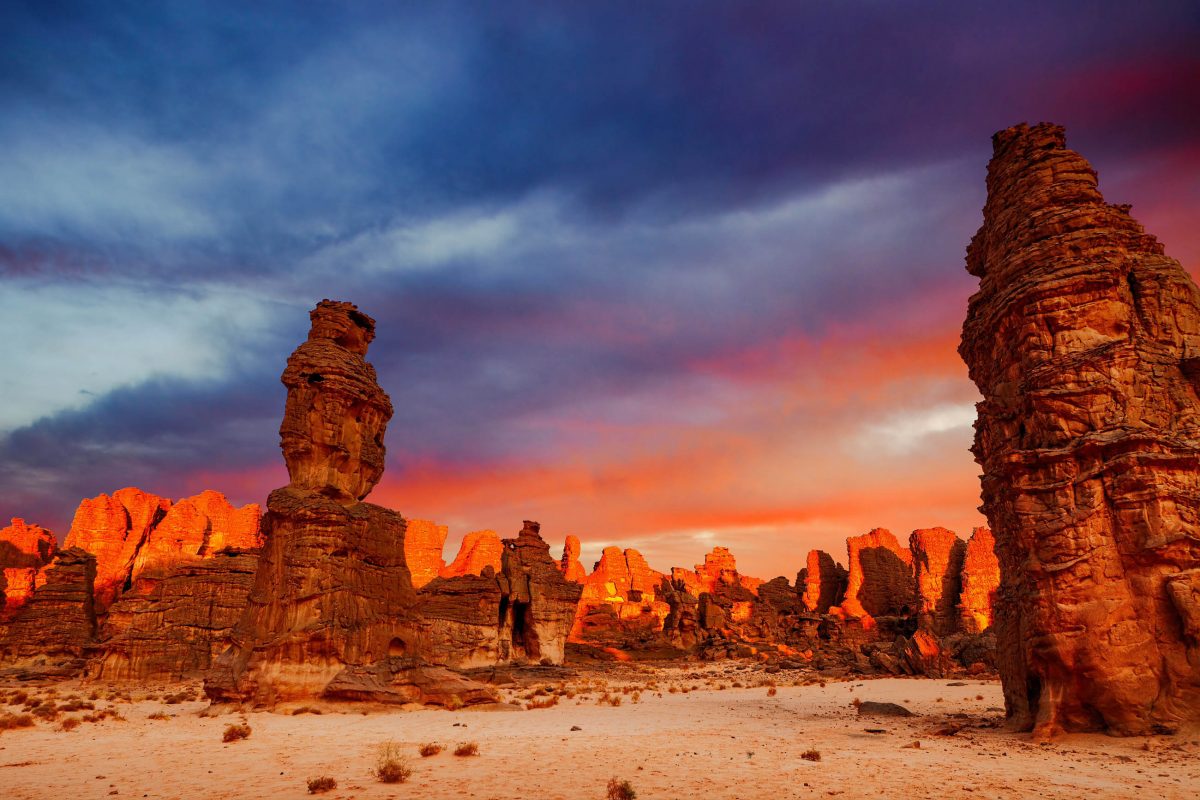
Wenn möglich, sollte eine Übernachtung in der Sahara jedoch unbedingt einmal erlebt werden! Wer hätte gedacht, dass im Sand gebackenes Fladenbrot so gut schmeckt?
Die meisten Touren starten am späten Nachmittag, wenn die ärgste Hitze verflogen und der spektakuläre Sonnenuntergang nicht mehr weit ist. Bei der Zubereitung von Abendessen und Frühstück und dem Beladen der Kamele dürfen auch die Touristen kräftig mit anpacken. Es werden aber nicht nur Kamel-Touren, sondern auch Ausflüge im Geländewagen, mit dem Motorrad oder einfach zu Fuß durch die spektakulären Dünen angeboten.
Wer mehrere Tage in der Sahara unterwegs ist, hat auch die Gelegenheit, die Nomadenvölker der Wüste und deren Lebensweise kennen zu lernen.

